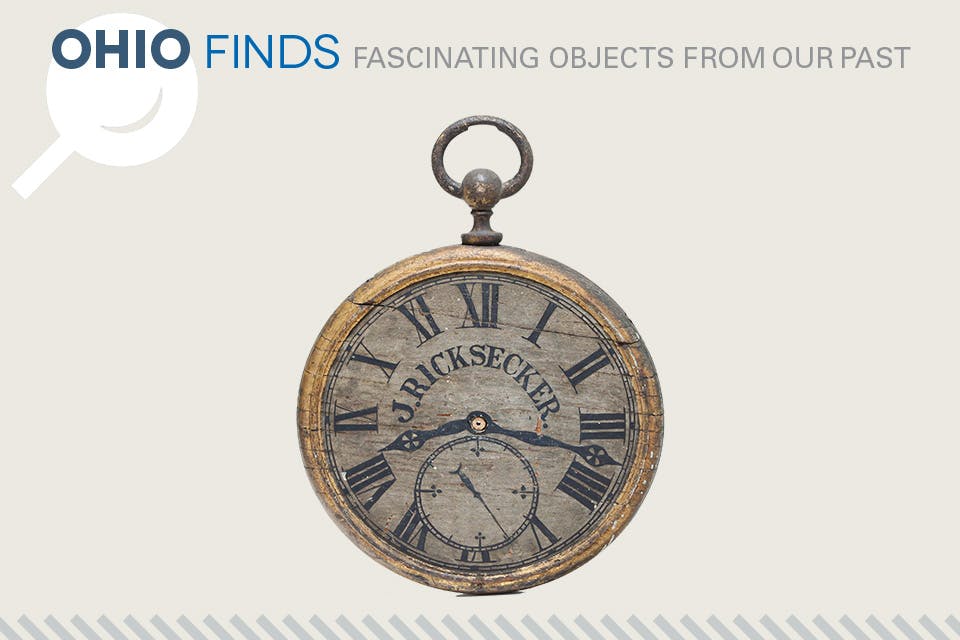Ohio Life
Ohio Finds: Jewelry Store Trade Sign
This example of a unique form of advertising during the late 19th and early 20th centuries was once installed outside a Factory Street business in Canal Dover.
Related Articles

Ohio Finds: Clyde Singer’s “Beaten Ball Club”
Born in 1908 in Malvern, Singer was a natural artist. He created this painting in 1949. READ MORE >>

Visit the Ohio Graves of 5 U.S. Presidents
Seven presidents were born in Ohio, and another called the state home before being elected. Connect with that history by visiting the final resting places of the five who are buried here. READ MORE >>
.jpg?sfvrsn=c7bfb738_5&w=960&auto=compress%2cformat)
3 Ways to Celebrate Ohio Statehood Day in 2025
Happy birthday, Ohio! Celebrate 222 years of the Buckeye State this week in both our current and former capital. READ MORE >>



